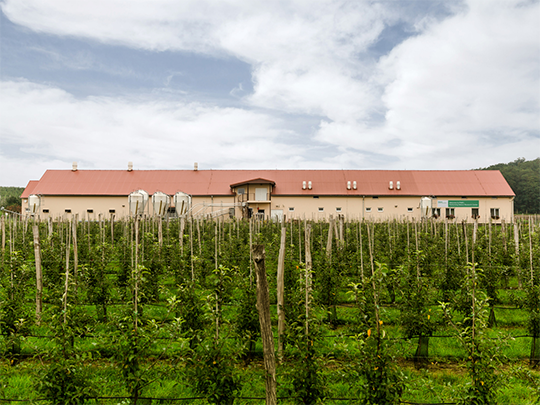Selecting phytogenic feed additives – What to consider?
Finding the best solutions for your feeding program can be as challenging as looking for the needle in the haystack. But we all know the search is worth doing as the right feed additive can make a huge difference in increasing your performance or reducing your feed costs. We have collected three factors why phytogenics can be a match in nature for you.
Do you know credence goods? Milk and meat, for example, are credence goods as you trust that they are not contaminated with pollutants or germs. Like you are trusting the feed industry, the farmer has to trust the feed miller, that chosen high quality ingredients.
Phytogenics are seen as trustworthy solution that helping the feed industry coping with various challenges as well as meeting consumer demands. Therefore, they deserve a closer look to find the best solutions and comibinations available in the plant jungle. So, what do I have to consider when selecting phytogenic feed additives ?
Choose true phytogenics:
- Check out the ingredient source
- Study research data and methodology
- Evaluate available products on how they work under real market conditions
First, you should look at the ingredient source.

On the market, there are products made of natural, plant-based or synthetic, nature-identical ingredients. While the substances may seem the same, they are quite different.
While natural, plant-derived extracts contain several active substances, synthetic, nature-identical – ingredients only contain a single lead substance. Thus, using purely natural phytogenics means greater synergistic effects between different active substances and all agents within a plant.
These synergistic effects mean the PFA has wider modes of action, providing greater benefits to the animal.
Another very important point is the standardization and high quality of the natural, plant-derived ingredients. Without standardization and quality, you cannot expect a consistent high performance.
But why is standardization necessary when selecting phytogenic feed additives? The main active compounds in phytogenics can have variations in their concentrations depending on their source and location of origin due to growth conditions, plant breed or methods of isolation. However, there are several quality management procedures that can be implemented to ensure product integrity. Quality and standardization are the key to delivering expected product performance.
Thus, it is important to follow specific procedures: By working with certified suppliers, it can be guaranteed that raw materials according to purchase specifications can be supplied. After delivery, the raw materials must be analyzed to ensure conformity to specifications. Implementation of audits and standardized production technology, final product analyses and shelf life testing for the final product completes the quality and standardization processes.
This means controlling every point of the production process, from working with suppliers and testing raw ingredients to manufacturing, analyzing and packaging the final phytogenic products shipped to customers worldwide.
With all that in mind, the highest quality ingredients mean nothing if the active substances do not survive to where they are needed most: in the animal’s gastrointestinal tract. To ensure delivery of the impact of phytogenics, look for those that are microencapsulated, a process that prevents the evaporation of volatile active substances.
Secondly, review the research and development when selecting phytogenic feed additives
There is more than quality. Diligence is required when evaluating any product for your operation. Look for PFAs backed by extensive and independent research, especially research that relates to your operation. Research should include company research, independent research, and third-party validation.
As foundation, there is company research. The research focus lies on identifying and evaluating botanical compounds and their combinations, and then testing those compounds in the laboratory through in vitro trials. This means a robust research and development (R&D) process.
Modern laboratories ensure controlled in-vitro testing to build deep knowledge of how phytogenic compounds and their combinations work. This builds deep knowledge of the mode of action of each phytogenic feed ingredient and influences PFA development and precise formulations.

Delacon examines its products not only by in vitro– but also by in vivo trials. Thus, in 2011 one of the largest company-owned trial sites in this field was opened: The PNRC for applied research and in vivo experiments under tightly controlled and monitored conditions. The research center has the capacity for piglets, broiler and layer trials, and emissions testing. PRNCs state-of-the-art emission research section has hermetically (air-tight) sealed chambers, which allow precise analysis of the influence of PFAs on noxious gases produced when animals metabolize feed. This research is important as the industry is increasingly under pressure to minimize environmental impacts of carbon dioxide, methane, ammonium or nitrogen dioxide from animal production.
Third, validation and on-farm trials are necessary
However, high-quality PFAs are also backed by independent experts and third-party research. As producers have become more interested in alternative feed additives, more than 1000 universities all over the world have conducted PFA trials. Moreover, validation is necessary: Selected phytogenic feed additives should have their effects validated through on-farm commercial trials as well as independent groups.
With EU zootechnical registration of two full plant based phytogenic feed additives, a huge step was taken in proving the efficacy of phytogenics. To complete this complex registration process, a dossier on complete, comprehensive and validated data on the feed additive’s quality, safety and efficacy is evaluated by the European Food Safety Authority’s independent scientists. Delacon was the first company to achieve zootechnical registration for pure plant based phytogenic feed additives, which is seen as a scientific “gold standard”.
What do you consider when selecting phytogenic feed additives?

Anne Oberdorf
Anne has always been fascinated by the unknown, the diversity and beauty of nature. Her love for nature brought her to Delacon in 2018 after studying agricultural sciences, where she worked as Technical Communications Manager and later as Product Manager Aquaculture. Since February 2021, she has been taking a new, natural career path outside of Delacon.










